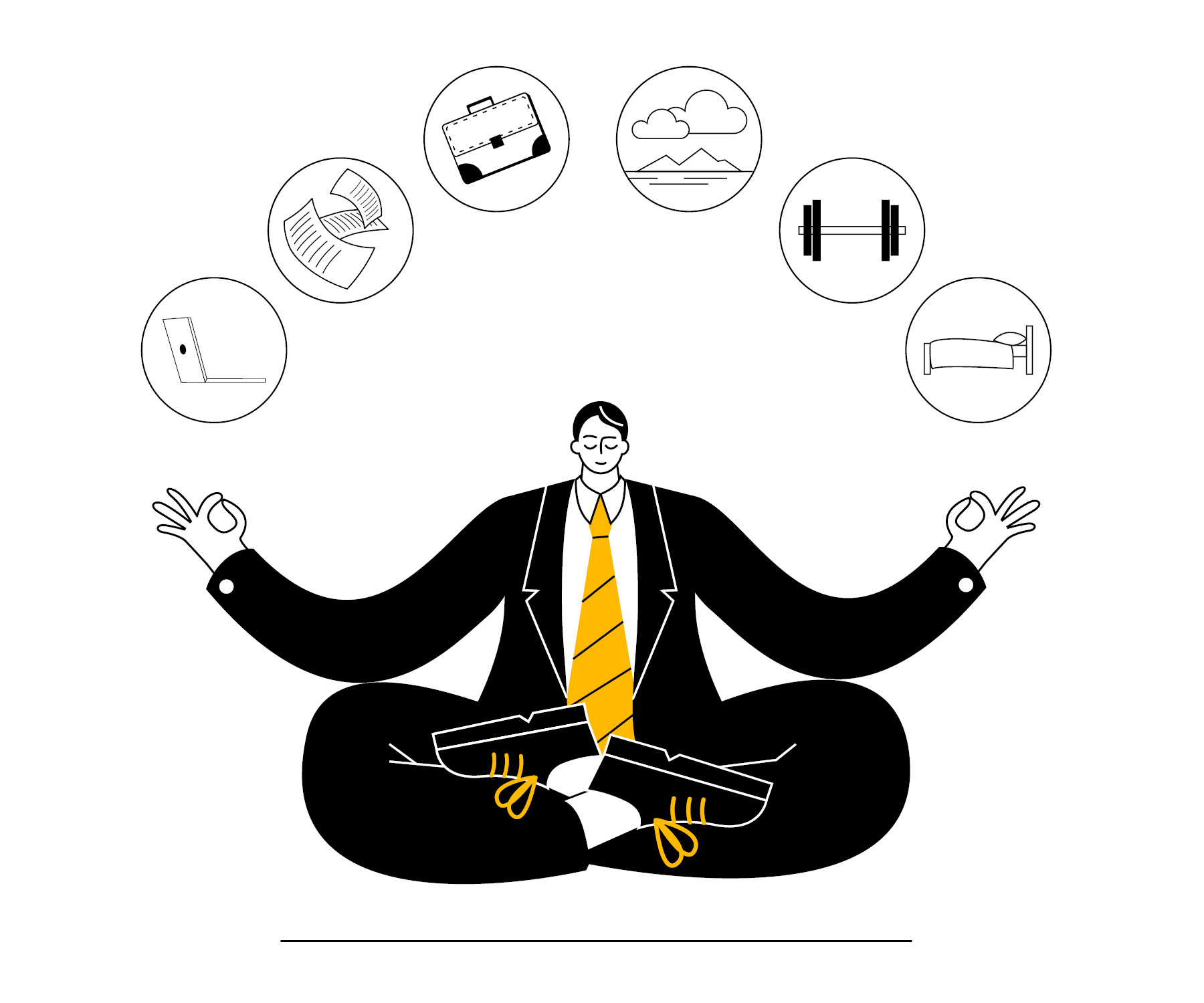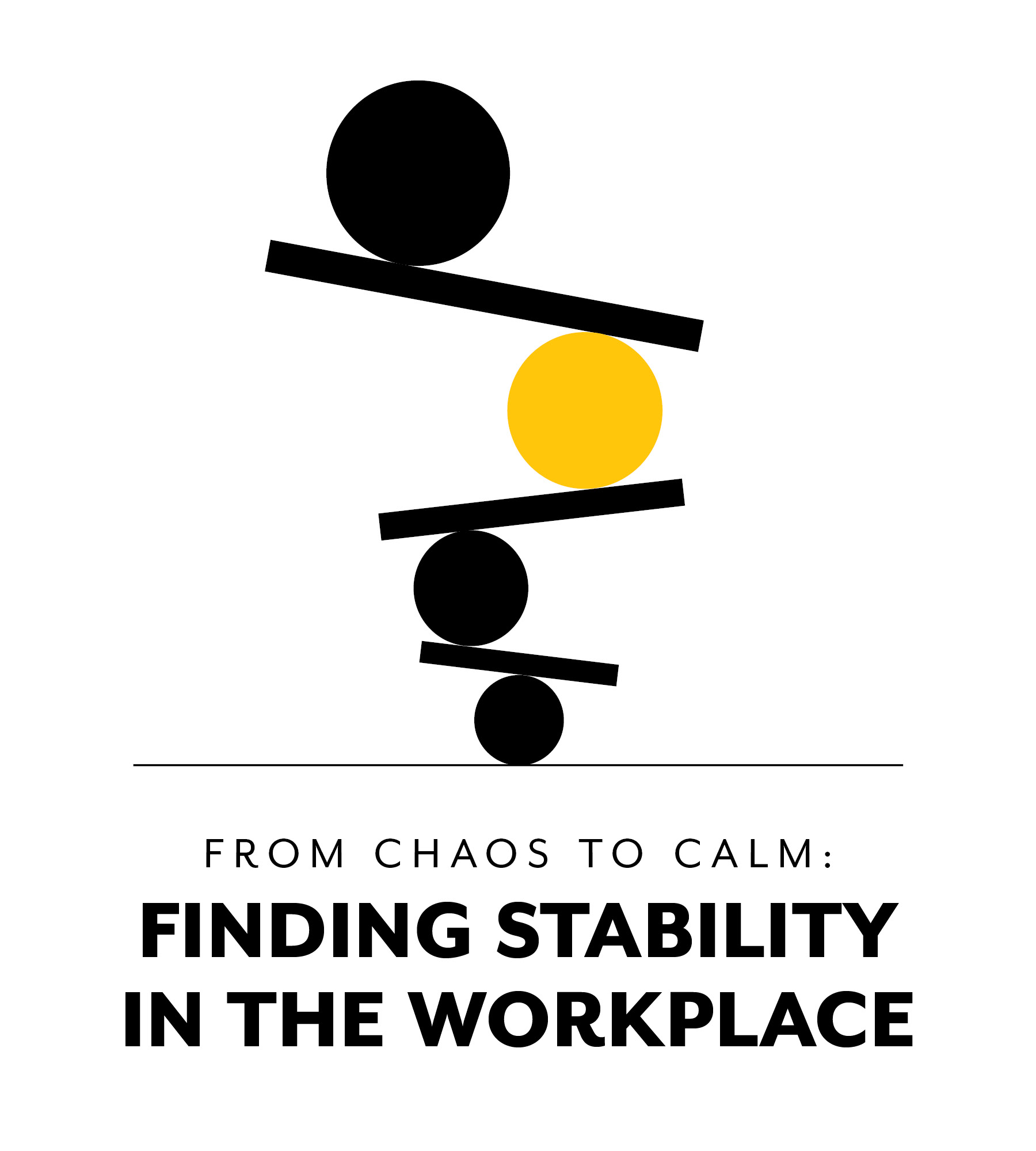Language
You can read the magazine in one of the following languages
It’s not uncommon to feel overwhelmed by the amount or complexity of work and just the pace that we are working at these days. The chaos can leave us feeling out of control and struggling to keep up. However, amid the whirlwind, there are ways to find stability and regain a sense of balance.
We know that our brains crave control and certainty in the fast-paced, ever-changing environment of the workplace. I think we can appreciate that we do not get much of that. In my book, Work Your Magic, I explore the importance of establishing ground rules to maintain stability during uncertain times.
I liken these rules to blocks placed under the ends of a seesaw, keeping it steady and balanced, allowing us to stand firmly in the center without swaying. These rules encompass routines, rhythms and rituals that contribute to our stability, both personally and professionally. By identifying and implementing these rules, we create a solid foundation to navigate the chaos of work.
Personally, these ground rules may involve activities like exercise, spending time with friends, or ensuring a healthy work–life balance by leaving work on time to attend children’s sporting events. Professionally, they might revolve around meeting protocols, communication strategies or conflict resolution methods.
When these rules are in place, we gain a sense of stability, allowing us to focus on what truly matters and we don’t have to ‘sweat the small stuff’.
At times, it’s easier to recognize signs of distress in others than in ourselves, but there are certainly indicators we can watch for in ourselves, such as letting our ground rules drop away.

Despite it being the first half of the year, I’ve noticed many people expressing feelings of overwhelm at work, almost as if we’re nearing the end of the year.
We might also notice if we lose interest in activities we typically enjoy, feel disconnected from others, experience irritability or snapping at people (often those closest to us), notice disruptions to our sleep patterns or become aware of unhealthy behaviors creeping into our daily lives.
1. Other People’s Shoes: Take a moment to see things from other people’s perspectives. Being locked into our own viewpoint can lead to overwhelm. When I am working with people I often encourage them to consider what might be going on for another person personally and professionally.
They are always surprised at how much they do not know about other factors that might be influencing the other person and how things are playing out. Considering the professional and personal perspectives of others broadens our understanding and influences how we see the situation and often makes it feel less personal and easier to manage.
2. Debrief with Someone You Trust: While not always available, gaining someone else’s perspective or simply venting can help us to feel less isolated, and we know that we feel better when we feel part of a tribe. Explaining the situation aloud can allow us to see things differently, and the other person may be able to help us problem solve.
3. Self-Compassion: During overwhelming times at work, practice self-compassion. Being kind to ourselves not only feels good but also positions us to make better decisions. By avoiding self-criticism, and speaking to ourselves like we would speak to a friend, it can reduce the stress we are feeling and then we are more likely to respond thoughtfully instead of reacting impulsively.
4. Gain Perspective: When we are in the middle of a situation, it’s challenging to see clearly. When I am working with people, I get them to consider best, worst and middle-case scenarios. Remember that we do have a negative bias, so often are likely to consider the worst possible case scenario and respond accordingly when maybe this has not or will not happen. This broader perspective helps us to challenge our negative bias and consider the situation more clearly.
5. Feed it with Facts: When people come to me to discuss difficulties at work, I can often see that there are gaps in what they know and they are relying on assumptions. Identifying gaps and seeking further information allows for you to assess the situation that is actually at hand. I ask my clients to ‘Feed it with Facts’ before jumping to conclusions.

These rules encompass routines, rhythms and rituals that contribute to our stability, both personally and professionally.
6. Temperature Reset: Often when people relay their current situation to me they will describe it as a 10 out of 10. I find it is helpful to recalibrate by comparing current events to past stressors that were 10 out of 10. So often they can see that the current situation may not be as severe as they first thought and just by recognizing this, it reduces feelings of overwhelm, and they feel a little more stable.
7. Deep Breathing: I know this can feel a little simplistic. We do know that when we are stressed we are more likely to have shallow chest breathing. Just by taking some deep belly breaths, it can help us to feel more stable. In these situations, it is unlikely that there is one thing that might fix the problem, but what we can hope to do is to reduce our stress so that we are in a better position to make good decisions.
8. Pause: Again this can feel a little easy, but if we can train ourselves to pause before making decisions, it can help us to feel more stable. We all know that reacting can worsen situations, so taking just one moment to gather thoughts can make a significant difference. I have a client who has a picture of a stop sign on her desk as a visual cue to stop before she sends that email.
9. Ask a Question: Instead of reacting, approach stressful situations with curiosity. Curiosity is so important in our current fast paced world. It is one of the pillars of my MAGIC framework. Asking a question rather than firing back defensively can make a big difference to challenging times at work. I ask my clients to keep a question in their back pocket to navigate challenging conversations with ease. This might be: ‘I did not see it like that – can you explain it to me a bit more?’ Or: ‘That did not occur to me – what do you think the next step is?’ Or something else that feels natural for you.
10. Create Space: Sometimes, the best course of action during overwhelming times is to step back and create space. Take a walk or some time for yourself before returning to address the situation with a clearer mind. You might not feel you have the time, but we have all seen how things play out when people react from a heated position and how long the recovery process can take.
Despite it being the first half of the year, I’ve noticed many people expressing feelings of overwhelm at work, almost as if we’re nearing the end of the year. When working with people, I ensure they establish a solid set of ground rules to provide a platform of stability during periods of uncertainty and change.

Sharon Darmody
Contributor Collective Member
Sharon Darmody is an Occupational and Organizational Therapist and Coach, author and a Co-Founder of Strive Occupational Rehabilitation. She has served on the Australian Rehabilitation Providers Association and is widely respected in the industry as she brings over 25 years’ experience. Her new book, ‘Work your MAGIC’ is designed for leaders at all levels to help teams and individuals rediscover what makes work, work again. For more information visit https://www.sharondarmody.com/
